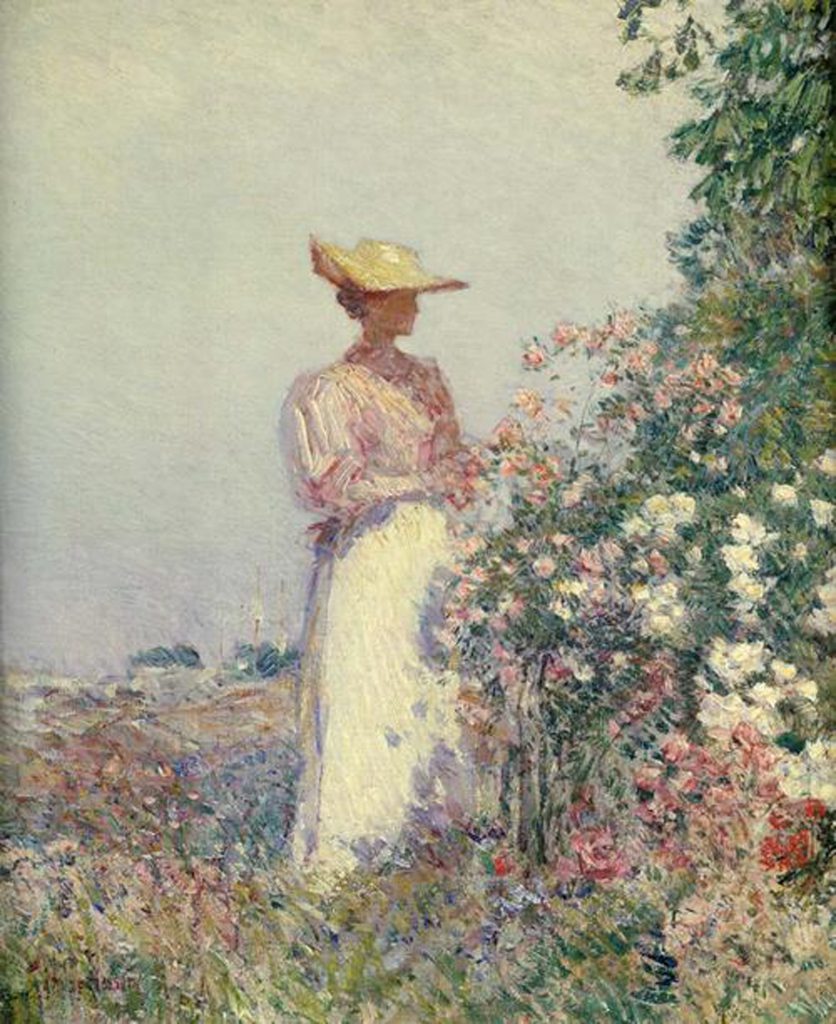Born in Dorchester, Massachusetts, Childe Hassam became one of America’s most noted Impressionist painters, but he never labeled himself in that way asserting he was more interested in the emotional content of his paintings than the technique of applying color. He also completed over 350 etchings and drypoints and about 45 lithographs, most of them after he was 56 years old. Watercolor was another specialty, and Hassam was one of the founders of the New York Water Color Society.
He left high school to work as a wood engraver and illustrator and in the1870s, studied art at the Lowell Institute and the Boston Art Club under Ignaz Gaugengigl. In 1883, he had his first one-man exhibition of watercolors at the prestigious Williams & Everett Gallery in Boston, and that same year, he and his wife, Kathleen Maude Doan, traveled to Europe and lived for three years in Paris.
On this journey, Hassam had his first opportunity to view Impressionism, the style of painting for which he would become known. He studied at the Academie Julian under Louis Boulanger and Jules Lefebvre, but he rejected the Academy’s teaching methods of conformity to focus on the tenets of Impressionism.
He was a founder of the Ten American Painters, active from 1898 to 1919 in rebellion against what the members perceived as mediocrity of the Society of American Artists, a group led by John La Farge and George Inness who earlier had defected from the National Academy of Design.
In 1899, he settled in New York and spent most of the rest of his life painting east coast landscapes although he did mural decoration in Portland, Oregon in 1904. Many of his paintings in the 1890s and 1900s were scenes of New York City where he loved to capture the life of the city combined with his unique sense of color and mood. It was a time when New York was building many skyscrapers, and the skyline was ever-changing.
He also painted on the Isles of Shoals off the coast of New Hampshire where he often painted in the famous gardens of artist Celia Baxter at Appledore. He also painted many landscapes around East Hampton, New York at the invitation of his friend Gaines Ruger Donoho. In 1919, he and his wife purchased a home there adjacent to Donoho’s widow.
From 1903, he began painting in Old Lyme, Connecticut, where his influence turned the focus of Art Colony painters from the sombre palette of Tonalism to the bright colors and quick brush strokes of Impressionism. He also painted in California, and in 1925, made drawings of the colonial churches in Charleston, South Carolina, from which he created etchings. During World War I, he painted a series of flags asserting his strong patriotism, and he did a handful of portraits, which in his later years he recalled as numbering about eight.
Bio from askart.com

